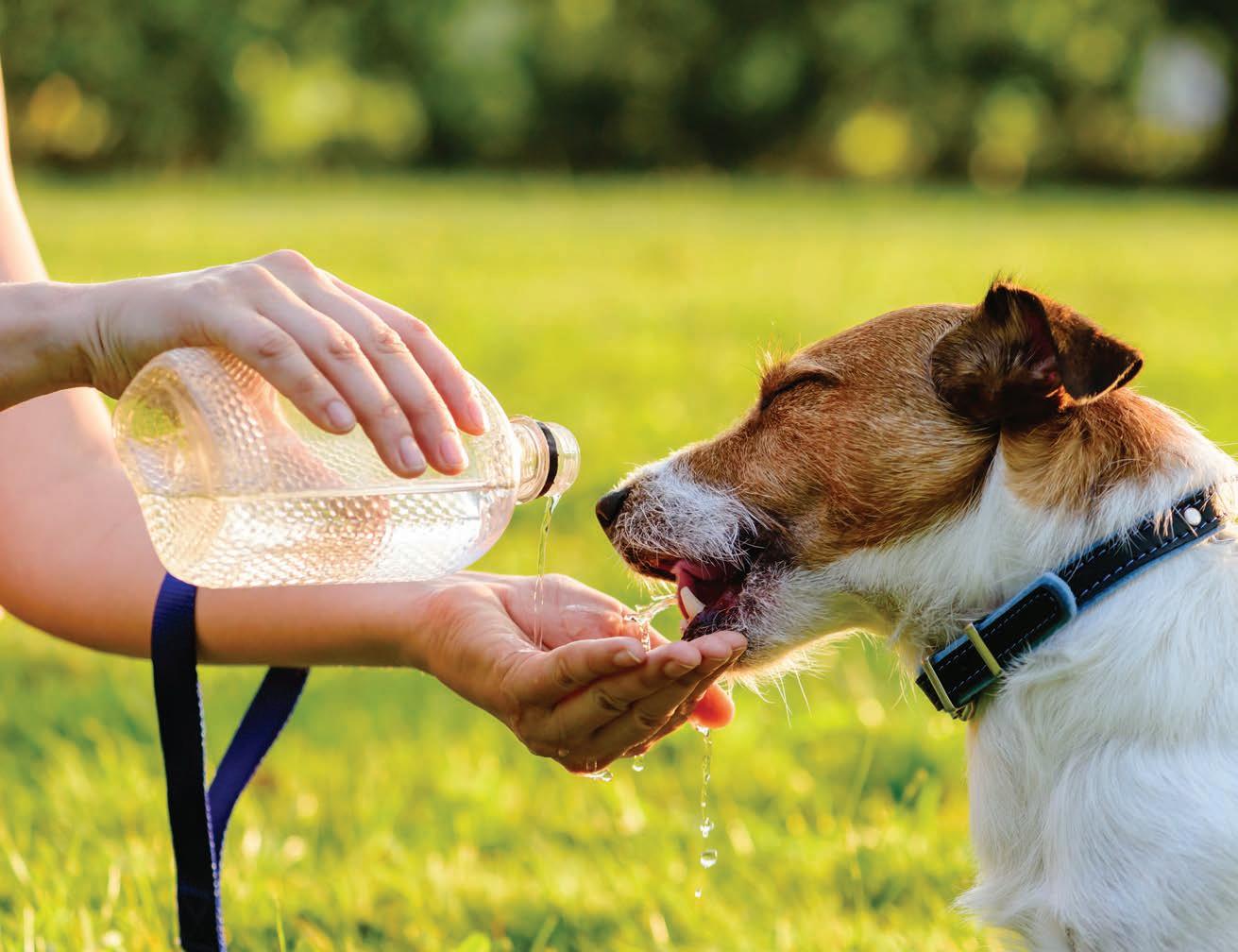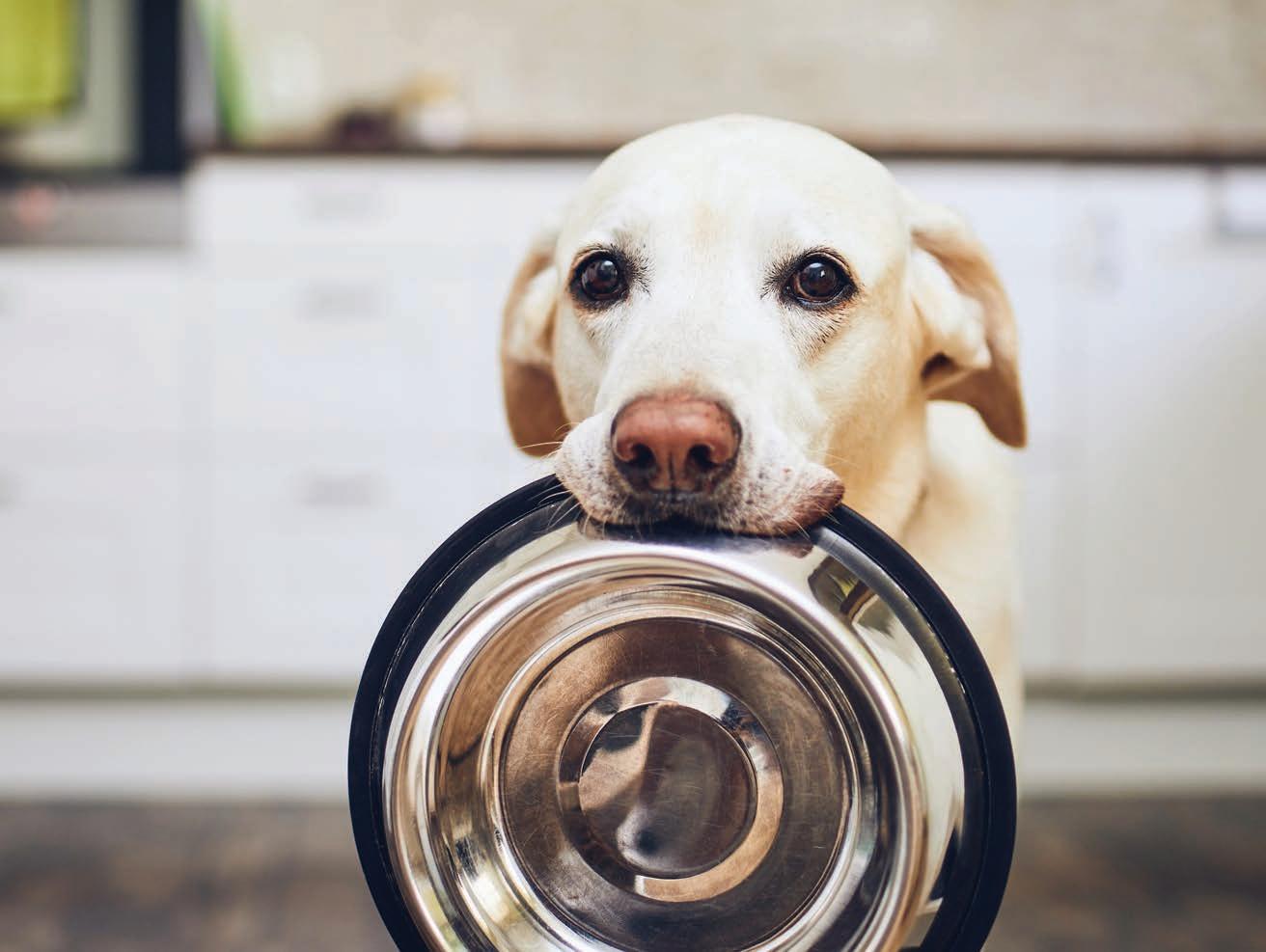
2 minute read
Springtime Pet Safety
from Pet Care
It’s tempting to jump right back into the outdoors, but dangers lurk.
Enjoying the sun and even taking a relaxing dip are two hallmarks of warm-weather activity. But be sure to follow some simple but important rules to guarantee your time in the sun doesn’t take a turn for the worse.
Advertisement
These tips should also be passed along to children who are around animals, family friends who may spend time with them, and any pet sitters you may employ. Take the time to work with your pet, so that he or she is never in any danger.
Heat Warning
Despite usually having a coat of fur, pets can be stricken with sunburn if not properly cared for in the warmer months. Be especially careful with dogs with short hair, exposed pink skin and white fur, since they are at the greatest risk of sunburn. Look for pet-friendly sunscreen for noses and ears, especially if you have are planning to be outside for a long period of time in full sun.
Be on the look out for signs of heatstroke, and immediately work to get your pet cooled off. The American Kennel Club recommends hosing dogs down with water, while allowing them to lick ice chips. Offer them a small amount of water, but not too much all at once. Pedialyte will also help with their thirst. In some cases, you may need to apply ice packs. If your worries continue, consult with your veterinarian.
Swimming Concerns
Many pets are scared of water, or are not strong swimmers.
Be aware of their preferences and skill levels when pets are around a pool, lake or river.
It’s a good idea to create barriers around pools, and sometimes a lawful requirement in order to protect others. Make sure a pool cover is firmly in place when you are away or when the warm months are over.
Never throw a pet into the water. If your dog enjoys water activities, be careful that they don’t overdo it.
Be aware of strong currents in rivers, and especially at the beach.
Never leave your dog unattended while swimming. If needed, a variety of pet floatation devices are also available, so discuss your options with your veterinarian.
You may not end up with the cheapest options, but you’ll be helping your pet live a longer, healthier life through better nutrition. And isn’t that the most important part of all?

WHAT’S INSIDE
The Association of Animal Feed Control Officials has a series of specific rules when it comes to pet-food ingredients. Those labeled with “chicken” must contain at least 95 percent chicken. If two ingredients are named, the first ingredient must be in a higher percentage and together the two listed ingredients must result in 95 percent of the product by weight.
Products with less than 95 percent of their labeled content must also include a descriptive term – like “liver dinner” or “liver entree” – and contain at least 25 percent of the listed ingredient. At the same time, pet foods that have the word “with” in the title are required to include at least 3 percent of that ingredient. Finally, “flavor” in the food branding requires a sufficient amount that the taste of the ingredient may be detected, but you should remember that there is no specific percentage requirement.
Going All Natural
A good rule of thumb is to







